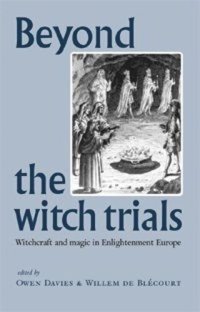
Ebook: Beyond the witch trials: Witchcraft and Magic in Enlightenment Europe
Author: Owen Davies, Willem De Blecourt (editors)
- Year: 2018
- Publisher: Manchester University Press
- Language: English
- pdf
This electronic version has been made available under a Creative Commons (BY-NC-ND) open access license. This book looks at aspects of the continuation of witchcraft and magic in Europe from the last of the secular and ecclesiastical trials during the late seventeenth and early eighteenth centuries, through to the nineteenth century. It provides a brief outline of witch trials in late seventeenth- and early eighteenth-century Finland. By the second half of the seventeenth century, as the witch trials reached their climax in Sweden, belief in the interventionist powers of the Devil had become a major preoccupation of the educated classes. Having acknowledged the slight possibility of real possession by the Devil, Benito Feijoo threw himself wholeheartedly into his real objective: to expose the falseness of the majority of the possessed. The book is concerned with accusations of magic, which were formalised as denunciations heard by the Inquisition of the Archdiocese of Capua, a city twelve miles north of Naples, during the first half of the eighteenth century. One aspect of the study of witchcraft and magic, which has not yet been absorbed into the main stream of literature on the subject, is the archaeological record of the subject. As a part of the increasing interest in 'popular' culture, historians have become more conscious of the presence of witchcraft after the witch trials. The aftermath of the major witch trials in Dalarna, Sweden, demonstrates how the authorities began the awkward process of divorcing themselves from popular concerns and beliefs regarding witchcraft.